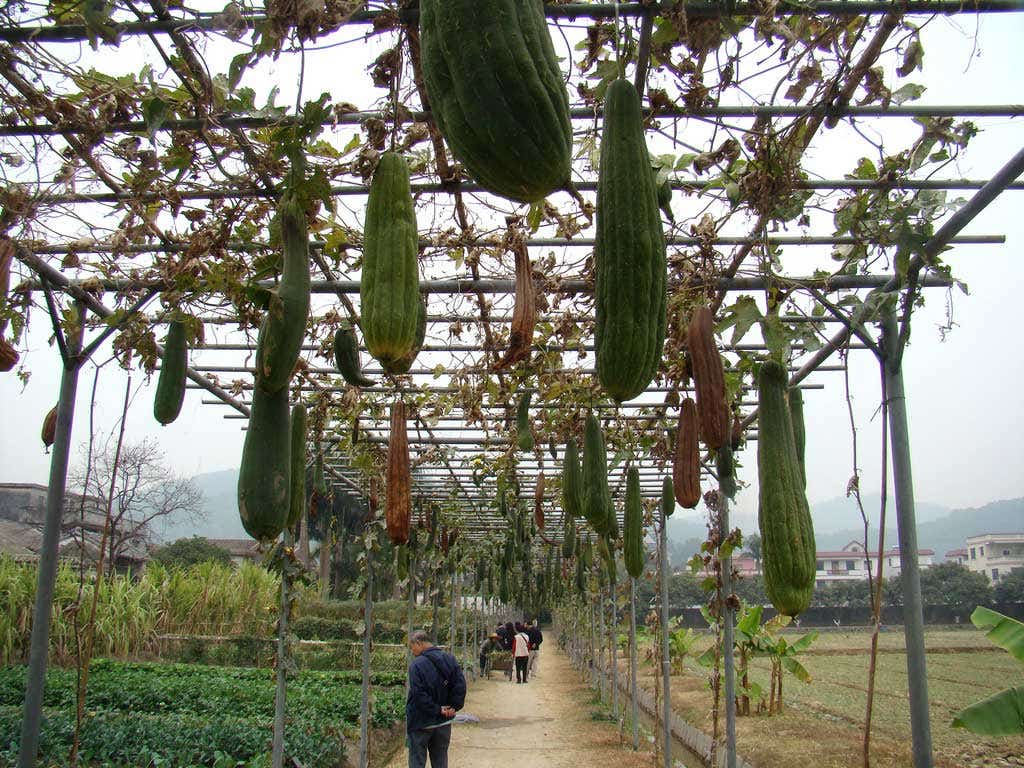
Your Exfoliating “Sea Sponge” is Actually a Land Vegetable—And It’s Delicious
The luffa gourd has been a garden-grown delicacy for centuries, and some people are just learning what it really is
A creature from the depths of the ocean? A skinny submarine-shaped bread loaf? These are some of the suggestions market-goers have mentioned to Nathan and Sherri Pauls, the owners of Luffa Gardens, near Wahtoke Creek in Reedley, CA, on viewing the fibrous sponges at their local stall. "Ninety percent of people have no idea it's grown in the soil and comes from a vine," says Nathan Pauls. Many assume it's a sea sponge, he adds, and with its rough, spongy texture and a cross-section that resembles something akin to a sand dollar, you can't blame them for thinking it. Shaped like giant cucumbers, luffa gourds (also spelled "loofah") are most commonly destined to become exfoliating sponges. The gourds are dried on the vine until feather-light, then soaked before the papery skins are peeled away and their coarse, beige interiors are cleaned by hand and prepared for sale. After a video of the Pauls' luffa gourd production went viral last December, resulting in streams of orders from curious customers (the Pauls say they make great kitchen sponges, too), the couple has been working day and night to keep up with demand. Currently, their grass-fed Angus cattle and hay operation is taking a backseat to the thousands of new luffa gourds sprouting in a hothouse before being planted in the ground this spring.
To best appreciate the luffa gourd as a food, however, it’s helpful to connect it to its vast and complex cucurbit (or gourd) family, the same one that includes squash, pumpkins and zucchini, as well as watermelon in another line, and cucumbers and other melons in a third. They’re also related to the Lagenaria, or calabash, and the bottle gourd, which is one of the world’s oldest domesticated edible plants, originating in Africa between 8 and 10 thousand years ago. In the Americas, according to culinary historian Leni Sorensen, “evidence suggests that gourds were one of the first cultivated plants in the mid-Mississippi Valley, as early as 3000 to 2000 BC.” The use of hard-shelled calabash as dippers, decoration, storage and fermentation vessels, and musical instruments is well documented across the Americas and Africa. As such, gourds have been vital to the culinary, cultural, and artistic development of our societies.
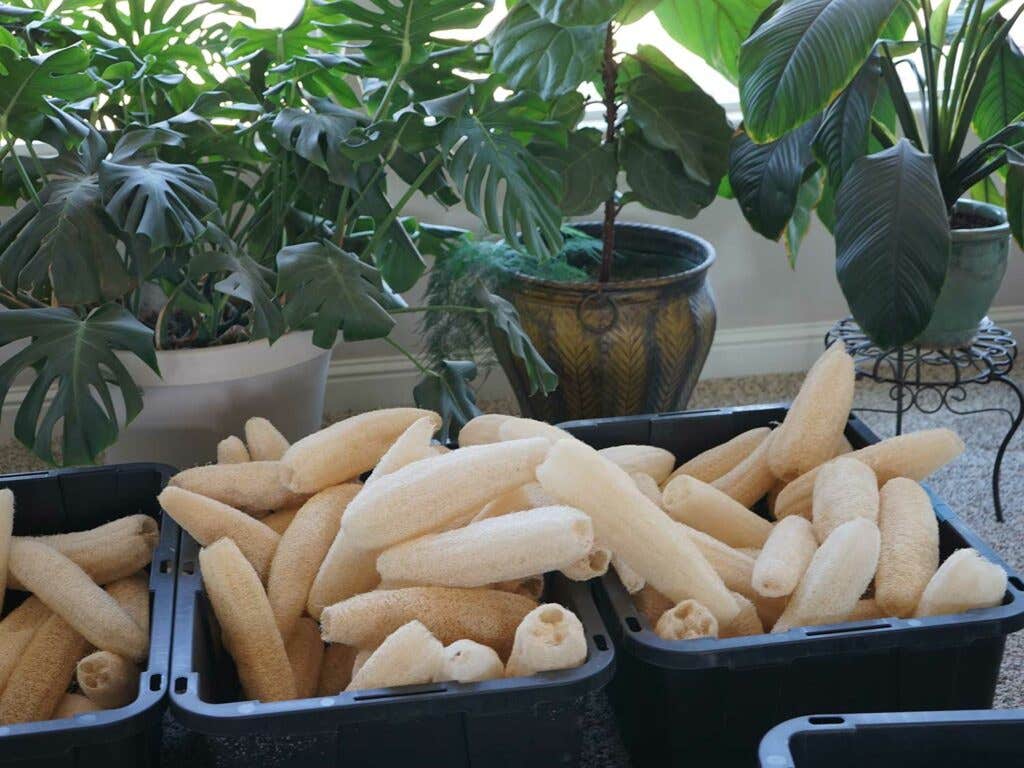
The Pauls' Californian luffa, grown from heirloom seeds, have attracted a uniquely Millennial demand, according to a report by Knight-Cronkite News Lab, because of the vegan, all-natural, organically-grown, biodegradable, and apparently antimicrobial nature of the sponge, one the Pauls insist you can keep for well over a year (with no bad odors, like you get with synthetic sponges, because the fibers ventilate quickly).
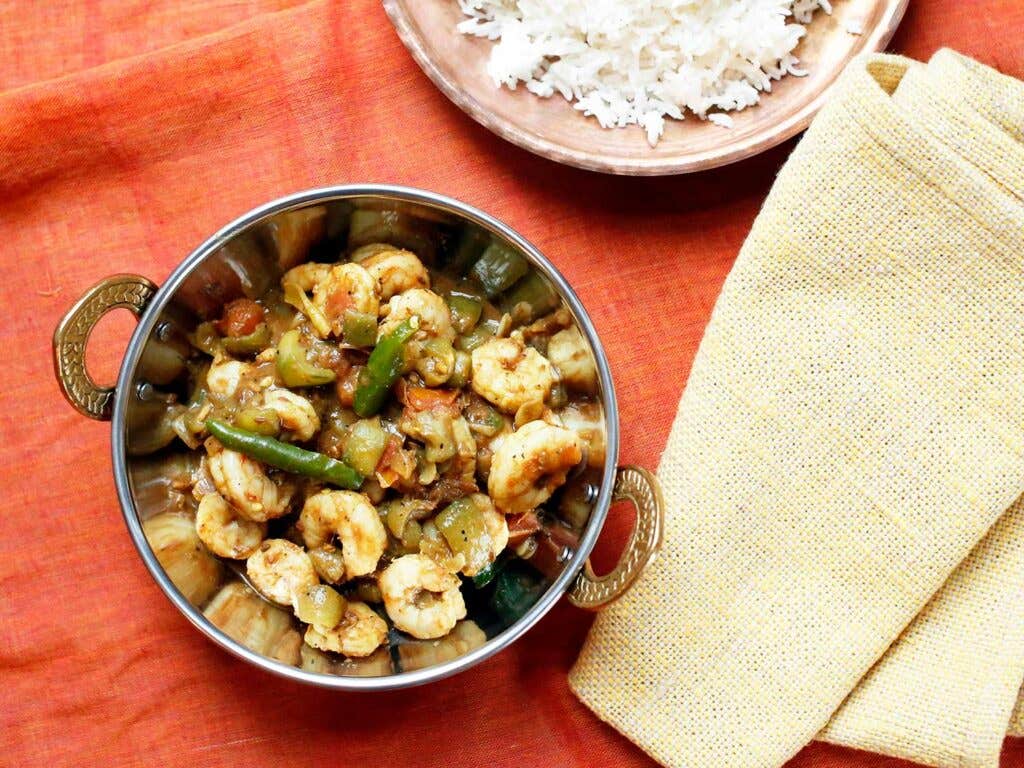
But there’s nothing particularly novel or unusual about the luffa gourd—other than the recent media frenzy around them. Pauls says: “Some responses on our posts are from people in countries where the gourds grow wild. They don’t understand the sudden interest [in the U.S] because they’ve lived with them for hundreds of years. For many Asians—from the East and Southeast where luffa originates, as well as the global diasporas—the luffa gourd and its cousin, the ridge gourd, a skinnier, elongated gourd with corrugated folds, have been used as a food source, medicine, and bath accessory for generations. I have spine-tingling recollections of my own well-meaning gran using a luffa, grown in the backyard, to scrub our bodies at bath time until our skin flushed pink. But I also carry the fondest memories of her fragrant luffa gourd curries, sautéed with onions, spices, and heaps of pungent dried shrimp. The cooked gourd takes on the texture of any other soft squash, like a zucchini or summer squash. It isn’t until they’ve matured and dried on the vine—at which point they’re no longer edible—that they become fibrous and spongelike.
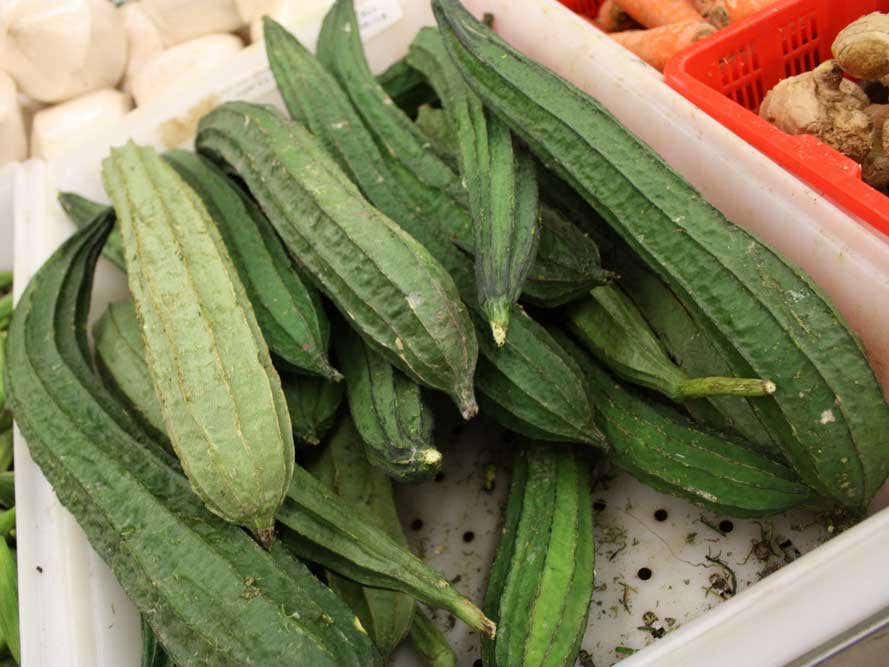
Dubai-based Indian writer Christabel Lobo says luffas are key in her mother's beauty regimen, and were ever-present in her childhood bathroom. "But when I'd visit my uncle's home in Pune [in India], wild sponge gourds grew in their garden, which my aunt would use to cook with." One of her favorite dishes was Mangalorean gosale, a chutney made from the ridge gourd.
Before World War II, in the United States, luffa was imported from Japan, where it was first grown commercially in the early 1890s, the spongy interior predominantly used as filters for ships, but also sold as bathing sponges. Pauls says that recently, “the captain of a 100-year-old American-built steamship, currently remodeled as a luxury cruiser, contacted me, looking for a large supply of luffa for his water filtration system.” After the bombing of Pearl Harbor, the luffa trade with Japan ended, and Americans became interested in “all things convenient, synthetic and prepackaged in the postwar era,” says historian Julia Skinner. “Synthetic sponges became de rigueur.”
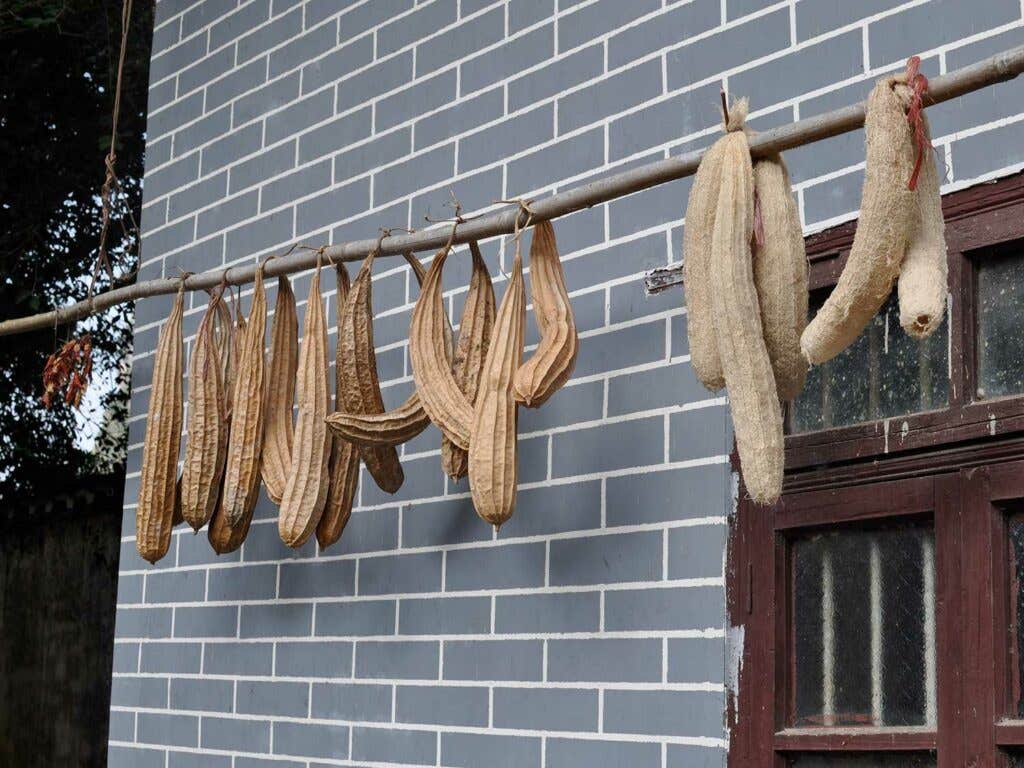
But whether imported or locally grown, the existence of the luffa in America persisted. Writer Eileen Smith fondly recalls her 1970s childhood in Manhattan: “My father loved Chinatown, and would often come home with products that were new to me. Including loofah sponges,” she says. “He’d cut the loofah in half, and each family member got one. I was specifically told to use it on my grimy kid-knees.” Until a few seeds fell out, Smith says she had no idea they were of vegetable origin.
Of the existing six luffa species, two are actually native to the Americas, evolved over time from a single progenitor. But how this species landed on American shores is still somewhat nebulous. Contrary to some transoceanic theories, in the 1979 text, The Gourd Book, Charles B. Heiser states: "It seems highly unlikely to me that seeds could have floated across the Pacific Ocean, found a satisfactory place to grow, and still retained viability." However, only one seed need be viable for a seed-bearing plant to thrive. Sorenson reminds me that the picture in the U.S. remains unclear, due in no small part to the fact that Native American agricultural knowledge has been "ignored or downplayed in the racist climate of much of the late 19th and early 20th centuries."
While the luffa gourd as an edible delicacy seems to be confined to minority communities in the U.S., it may not be too long before Americans come to appreciate the luffa as more than their favorite exfoliator.
Keep Reading
Continue to Next Story










